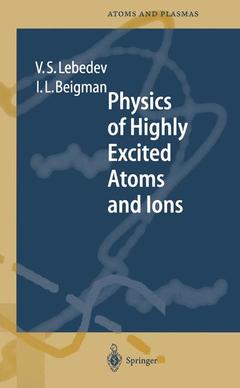This monograph is devoted to the basic aspects of the physics of highly ex cited (Rydberg) states of atom's. After almost twenty years, this remains a hot topic of modern atomic physics. Such studies are important for many areas of physics and its applications including spectroscopy, astrophysics and radio astronomy, physics of electronic and atomic collisions, kinetics and di agnostics of gases, and low- and high-temperature plasmas. Physical phenom ena in radiative, collisional, and spectral-line broadening processes involving Rydberg atoms and ions are primarily determined by the peculiar properties and exotic features of highly excited states. The growth of interest and research activity in the physics of Rydberg the last two decades was stimulated by an extremely rapid de atoms over velopment of high-resolution laser spectroscopy, methods of selective excita tion and detection of highly excited states, atomic-beam techniques as well as radio astronomy. This has facilitated significant progress in the differ ent directions of the physics of highly excited atoms being of fundamental and practical importance. In particular, evident advances were achieved in studies of the structure and spectra of highly excited atoms, their behavior in static electric and magnetic fields, interactions with electromagnetic ra diation, spectral-line broadening and the shift of Rydberg series, collisions with electrons, ions, atoms, and molecules, etc. The principle objective of the present book is to reflect the most important physical approaches and efficient theoretical techniques in the modem physics of highly excited atoms and ions.

